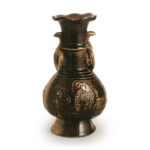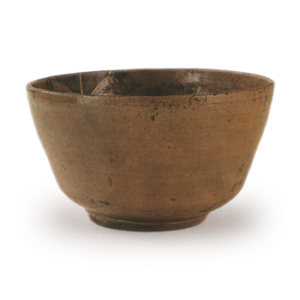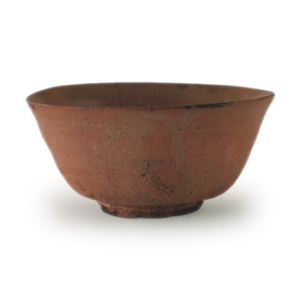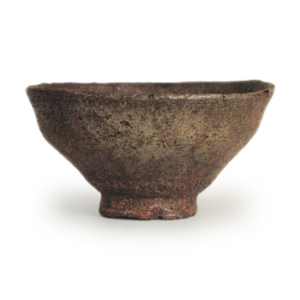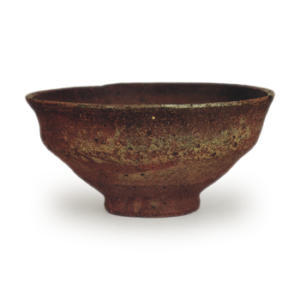
Excavated from Hyakume, Kiln Town, Seto City, Aichi Prefecture, Japan
14th century
Height 3.0cm, Diameter 8.5cm, Body 12.5cm, Bottom 9.2cm
This Buddhist vase is one of the most representative vessels, along with four-mimi jars, from the entire Kosedo period. Large and medium-sized vases of the Kamakura period were generally decorated with a double-ear “fusubu” ring attached to the oral portion. Needless to say, this type of vase was influenced by foreign influence, and is of a different lineage from the flowers that have been produced since the Heian period (794-1185).
This vase has a lilie-gate mouth rim, which is typical of Kosedo vessels, and a butt-zone in the center of the mouth and a three-tiered carved step that appears to be a butt-zone at the upper edge of the body. The body is a round body with a rounded bottom, and is decorated on two sides with arabesque designs surrounding petals of what appear to be chrysanthemums or lotus flowers in sealed flowers. The foot is low and spread at the base, which is common for such large vases. The sleeve is covered with ash glaze on one half and iron glaze on the other half, a technique often seen in Kosedo vases. There are some repairs to the mouth rim and part of the base foot, but this is one of the finest Kosedo Buddhist vases.

